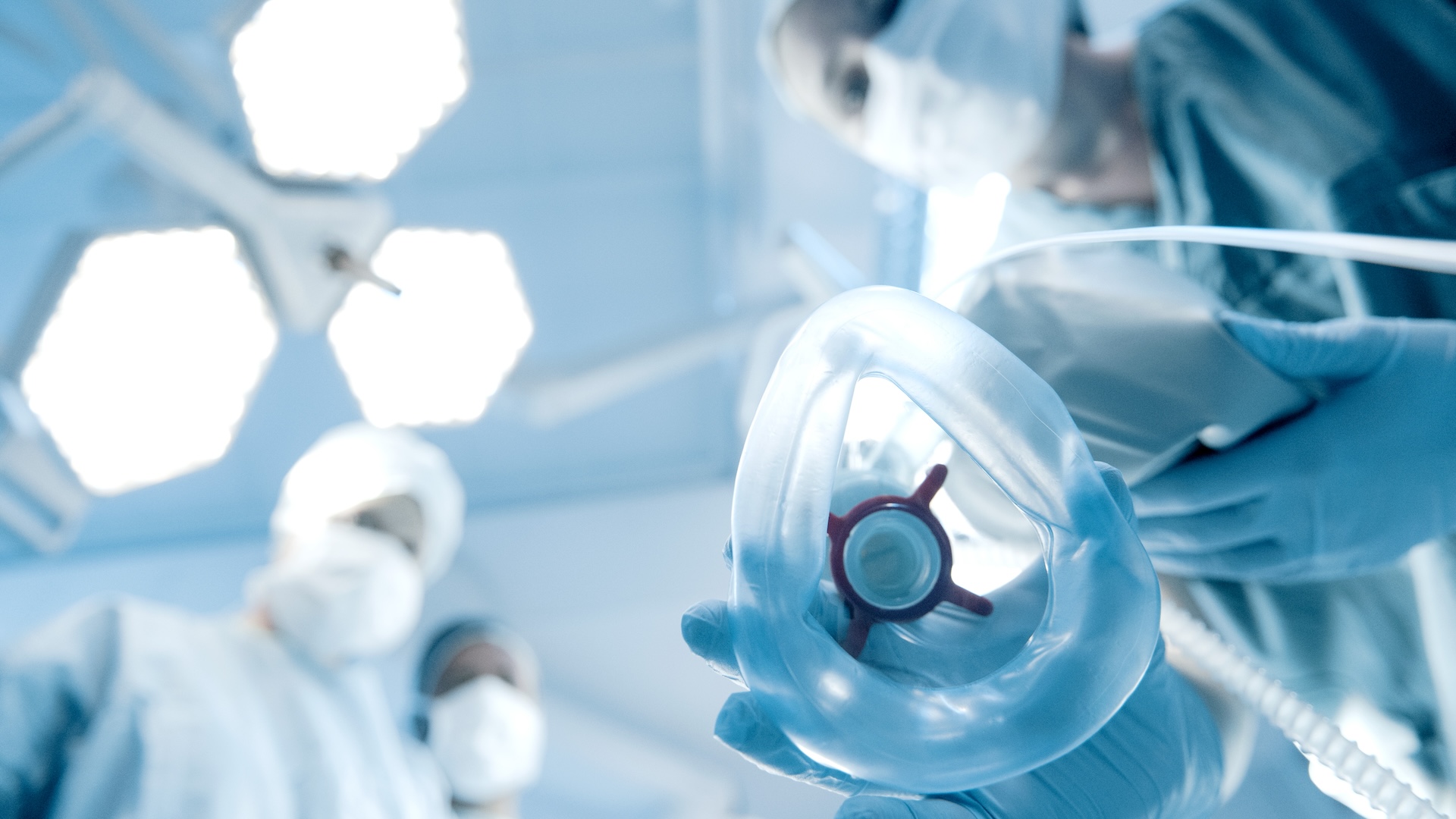Are women less sensitive to anesthesia than men?
Some, but not all, research suggests that more women recall events that happened under anesthesia than men do, and that women wake up from anesthesia faster than men.

General anesthesia is given during surgery to make people unconscious, eliminate pain during the procedure and prevent reflex movements. Many factors are known to impact how anesthesia affects a given person, from their weight and age to whether they have kidney or liver diseases that alter how drugs are metabolized.
But does anesthesia affect males and females differently? And if so, should that change the doses each sex receives?
Current research does hint at some sex-based differences in how general anaesthesia affects patients. However, sex "doesn't drive dosage decisions," Dr. Elisha Peterson, a pediatric pain medicine physician and an associate professor at George Washington University, told Live Science.
She noted that, historically, most research on anesthesia has been done with white, male subjects, and researchers do not yet have sufficient data from female participants of different backgrounds to provide tailored health care based on these factors. As such, a female patient who previously experienced some level of consciousness during surgery would be treated in the same way as a male patient with a similar history: Doctors would monitor the patient's brain waves to monitor how well the anesthetic was working and adjust the dose accordingly throughout the procedure.
Related: How does anesthesia work?
Current guidelines on the use of general anesthesia do not differ by sex, in part because existing research on sex-based differences in anesthesia sensitivity shows mixed results.
For example, data collected after the approval of propofol — one of the most widely used general anesthetics — suggested that men woke up more slowly from the drug than women do. Further research over the years backed up this idea that women emerge faster from general anesthesia than do men, regardless of the drug used.
Sign up for the Live Science daily newsletter now
Get the world’s most fascinating discoveries delivered straight to your inbox.
In addition, a 2023 review of 33 studies suggested that women under general anesthesia had, on average, 38% higher incidences of "anesthesia awareness" than men did. That means they experienced some moments of consciousness, ranging from a dreamlike state to full awareness, despite being under general anesthesia. Although patients recall having some level of consciousness, they do not typically feel pain during anesthesia awareness, according to the American Society of Anesthesiologists (ASA).
Women also woke up from surgery and were able to respond to questions sooner than men did, the 2023 review suggested.
However, some studies, such as this 2002 paper from Thailand, do not report the same pattern. Out of about 800 patients in the study, most of them female, five experienced "intraoperative awareness" — three females and two males. Ultimately, the study authors concluded that inadequate anesthesia was the most likely reason for these five cases.
Peterson noted that differences in male and female physiology, hormone levels and metabolic rates may contribute to differences in the way each sex processes general-anesthetic drugs. Early data from both animal and human research buttress that idea.
In 2024, for example, researchers showed that female mice and adult women took more time to fall unconscious under anesthesia than their male counterparts, and they also woke up faster. Additionally, male mice that were castrated were more resistant to the effects of anesthesia, but upon receiving testosterone injections, became more sensitive to it.
Growing evidence shows that anesthetics modulate the activity of parts of the brain that control the sleep-wake cycle, which are primarily located in the hypothalamus. There's evidence that sex hormones, such as estrogen and progesterone, can affect the sleep cycle, potentially via the hypothalamus. These hormones might also make a difference to how well general anaesthesia works, according to a 2011 study in the British Journal of Anesthesia.
There's also research in mice showing sex differences in the dopaminergic system — major pathways in the brain that rely on the chemical messenger dopamine. This system helps regulate arousal, or wakefulness and attention, and thus may influence how quickly someone wakes up from anesthesia, said Dr. Raveesh Sunkara, a consultant neurosurgeon at Arete Hospitals who was not involved in that past research. However, it's not yet known for sure how those brain differences might actually impact sleep and anesthesia sensitivity.
Again, even though some research hints at sex-based differences, doctors' application of anesthesia does not vary by sex, Peterson emphasized. The overall rate of anesthesia awareness is estimated to be about 1 to 2 per 1,000 medical procedures involving general anesthesia, according to the ASA.
Moreover, there are potential risks associated with increasing anesthetic dosages; for instance, they could lead to dangerous cases of severely low blood pressure, said Dr. Kai Rabenstein, an anesthesia adviser at SEDSConnective, a charity supporting individuals with hypermobility, neurodivergence and associated conditions.
Until further research sheds light on concrete and actionable sex-based differences, some measures could be taken to reduce incidents of anesthesia awareness in women, Peterson suggested. For example, providers should use brain-monitoring tools more frequently for procedures with a high risk of anaesthesia awareness, such as emergency Caesarean sections.
In addition to analyzing the patient's history with anesthesia, it can be worth assessing their alcohol consumption patterns. "Alcohol sensitivity can be taken as a guide," Rabenstein said, as alcohol is metabolized similarly to propofol in the body. That means people with a high alcohol tolerance might also be tolerant to the anesthetic's effects. The ASA also advises patients to inform their doctors of past drug and alcohol use, as it can "increase the risk of anesthesia awareness."
Editor's note: This story was updated on April 29, 2025, to clarify a quote from Dr. Kai Rabenstein.
This article is for informational purposes only and is not meant to offer medical advice.

Sahas is a freelance journalist and writer. A psychology major with minors in history and commerce, he previously worked in the tech and e-commerce space for brands like Digital Trends and Mashable. As a science journalist, he has reported for Science and Live Science and specializes in covering science news, shots, and addressing scientific mysteries. Being a cancer and autoimmune diabetes survivor, he understands how patients can be constantly bombarded with misinformation, and dedicates a portion of his work to debunking health myths.
You must confirm your public display name before commenting
Please logout and then login again, you will then be prompted to enter your display name.
